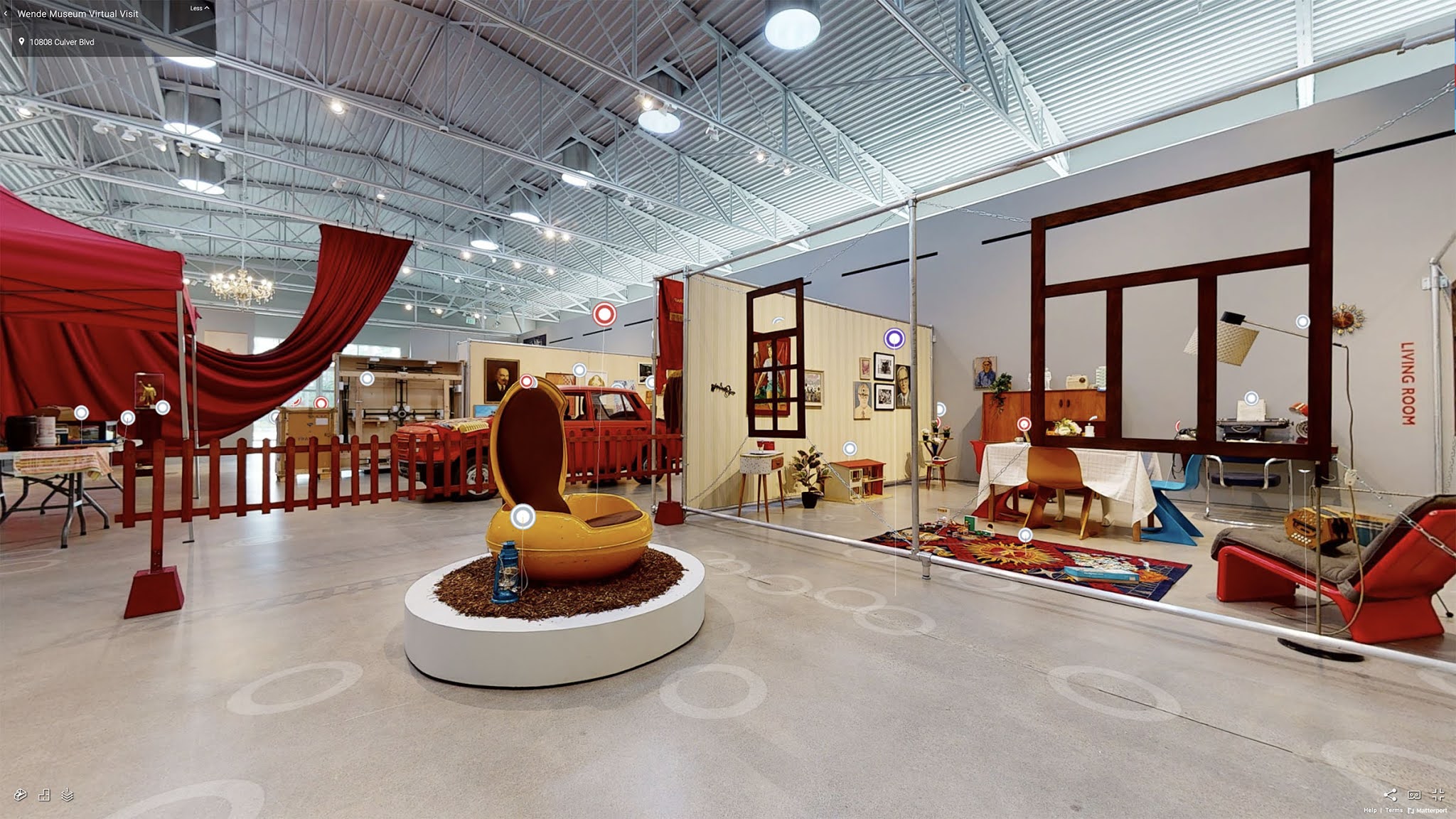East German Utopia
As we contemplate a divided America, the Wende Museum's fall 2020 exhibitions explore a divided Germany. "Transformations: Living Room -> Flea Market -> Museum -> Art" and "See Thy Neighbor: Stern Photographers Thomas Hoepker and Harald Schmitt in the GDR" have been installed in the Wende's Culver City galleries, which of course remain closed to visitors. The exhibitions can however be explored online via Matterport, a browser plug-in that loads without fuss, or did for me. It allows users to zoom around a 3D floorplan, getting a fairly good view of specific objects and the installation. Clicking on dots reveals text labels or videos in a pop-up window.
Separately the Wende offers its "catalogs" as downloadable .pdf's. Wende visitors will recognize these as the substantial brochures previously offered as handouts. Between that and the Matterport content, they convey gallery texts, nicely done short videos, and a very early beta virtual experience that places objects and installations on an equal footing.
With the fall of the Berlin Wall, East Germans strove to upgrade their lifestyle with putatively superior products from the capitalist West. The physical culture of the socialist East was thrown out or sold cheaply at yard sales. This consumerist purge, noted by Wende Museum founder Justin Jampol, was one factor motivating the formation of the collection. "Transformations" is therefore about both East Germany and its unlikely outpost in Culver City. Objects are displayed not just as they were used but as they might have been disposed of. A red drapery accents a swapmeet simulation.
 |
| Meissen Porcelain figure of Adolf Hennecke |
Meissen Porcelain, a relic of 18th-century monarchy, survived into the socialist era and beyond. On view is a porcelain figure of Adolf Hennecke, a coal miner who became an East German celebrity for beating his quota by 387 percent on one glorious day in 1948. He was awarded three cartons of cigarettes, three pounds of fat, and a bouquet of flowers.
As in past exhibitions, the Wende commissioned several contemporary artists to react to works in the collection. Above is a virtual installation view of Ken Gonzales-Day's Monumental Vision: Labor/Lenin (2020), appropriating Zsolnay porcelain figures. At left are collages by Chelle Barbour.
"See Thy Neighbor" pairs the work of two Stern magazine photojournalists, Thomas Hoepker and Harald Schmitt. In 1973 the West German magazine Stern set up an East Berlin office with Hoepker as photo-correspondent. He was replaced in 1976 by Schmitt, who in turn was ousted by the East German government in 1983.
Both were tailed by the Stasi (secret police), but the latter had no control over which images would be published in the West German magazine. The best images here are fleeting expressions of angst and ennui.
P.S. The Matterport content covers the open storage spaces and the sculpture garden as well as the temporary exhibitions. The schalmei, an East German musical instrument "looking as if it could usher in the Last Judgment", is accompanied by a performance video worthy of Christopher Guest.





Comments